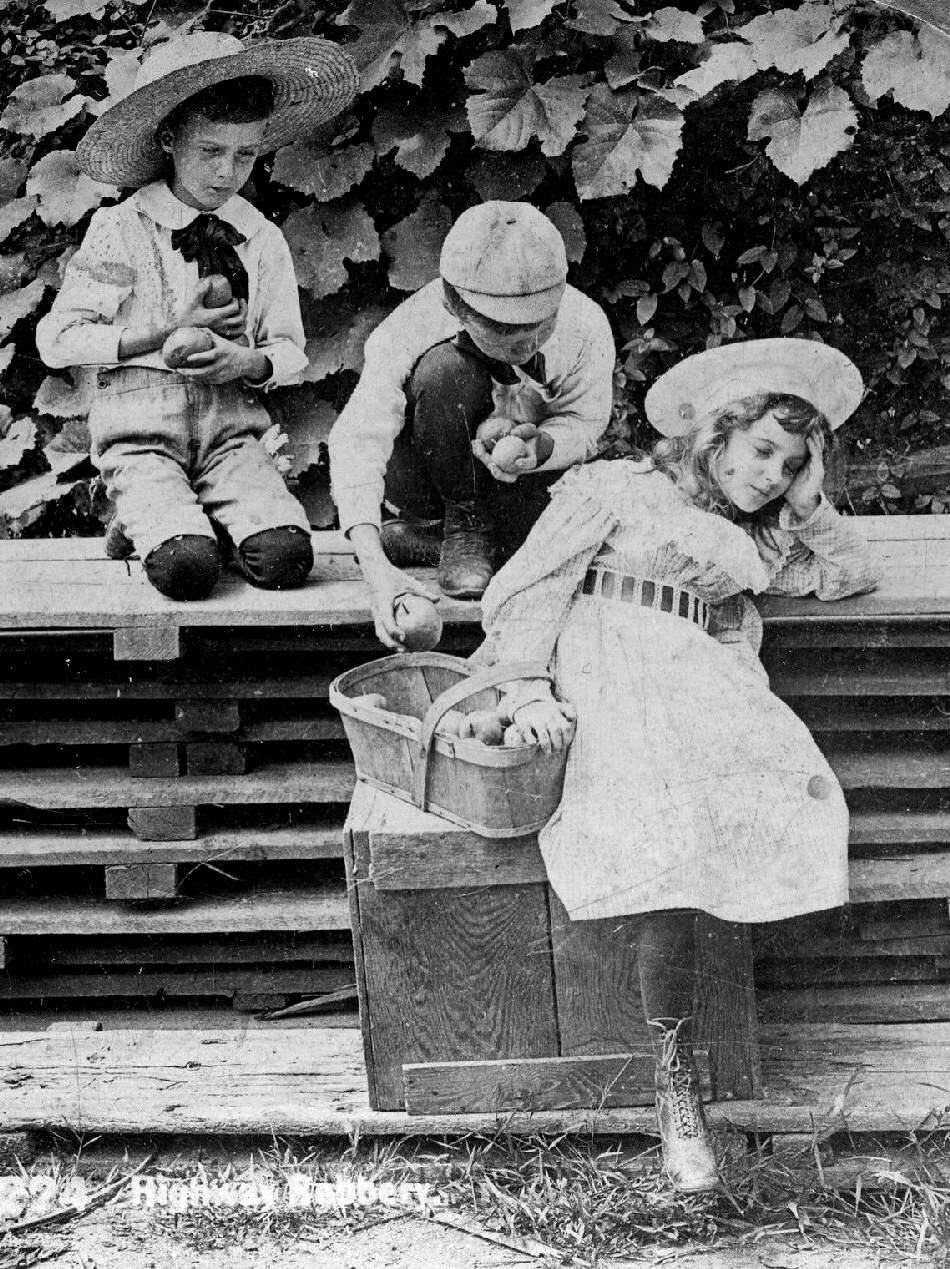
Changing Concepts of Childhood: Chronological Trends--The 20th Century

Figure 1.--In an age befor movis and even many images in newspaoers and magazines, many families had sterespoces in their parlors. Some of the sterescope cards were informative providuing iumages of people, places, buildings, animals, and events into the home. Others were just for fun like this turn-of-the 20th century card highlighted differences between boys and girls. Feminists in the 1960s began promoting the idea that there are no differences berween boys and girls. This card was entitled 'Highway robery'. It was published by the Iniversal Photo Art Co. in Philadelphia. As language was noit an issue, Thee were offuces in Eurooe to sell their cards.
|
|
The 20th century was described as the 'Centutry of the Child' by the New York Museum of Modern Art (MoMA) for a 2012 exhibit. This for a wide range of reasons including those discussed by MoMA and others seens an apt descriptin. A revolution in how childhood was viewed began in the 18th century and became largely enshrined by 19th century Victorian thinkers, including both authors and and artists. Socilist authors have often monopolized the public fora, advancing the idea that capitalism exploited both women and children. The exact opposite is the case. Only with the emergence of capitalism and indudtry did society begin to become productive enough that children did bot have to work. Even before civilization itself, children worked as hunter gathers and then with the agricultural revolution, children worked in the fields with their parents. For the first time with the industrial revolution and the expansion of the middle class do we see child labor laws and public education. but only in indudtrisalized countries. These trends began in the 19th century, but became widespread in the 20th century, first in Europe snd North America and by the end of the century in Asia, beginning with the Asian Tigers and the adoption of market reforms (capitalism) and spreading to China, India, and other countries. This has thrust some one billion people from abject poverty to the propsperous middle class, fundamentally changing the experience of childhood. A related pheonenon is urbanization. The world population in the 20th centiuru went from a primarily rural to a primarily urban society. This had many implications for children. Another 20th century development impacting childhood is totalitarianism. Totalitarian societies, socialist variants like Communism and Fascism, see children as property of the state and seek to take control of child raising from the parents and transfer cointrol to the state. Another important development is consumerism and the mass media, two intertwined developments. Toys and games are as old as civilization. But there were many interesing features of 20th century toys and games as well as will rising affluence the invreasing number of children who get to enjoy them. There were major changes in fshion and clothing. One development in the 20th century is the varying views of gender. All kinds of opportunities and activities have opened up for girls. In cotrast, a substantial segment of society is trying the change the behavior of boys. Many ignore the simple fact that boys and girls are different and are intent on applying the same standards and demands on both boys and girls. This essentially disadvatages boys in the schools. [Sommers]
Sources
Sommers, Christina Hoff. The War Against Boys: How Misguided Feminism is Harming Our Young Men (Simon & Schuster: New York, 2000), 251p.
HBC

Navigate the Historic Boys' Clothing Web Site:
[Return to the Main childhood chronology page]
[Return to the Main childhood essay page]
[About Us]
[Introduction]
[Activities]
[Biographies]
[Chronology]
[Clothing styles]
[Countries]
[Theatricals]
[Topics]
[Bibliographies]
[Contributions]
[FAQs]
[Glossaries]
[Images]
[Links]
[Registration]
[Tools]
[Boys' Clothing Home]
Navigate the Historic Boys' Chronology pages:
[Return to the Main chronolgy page]
[Late 18th Century]
[The 1800s]
[The 1810s]
[The 1820s]
[The 1830s]
[The 1840s]
[The 1850s]
[The 1860s]
[The 1870s]
[The 1880s]
[The 1890s]
Navigate the Historic Boys' Clothing Web style pages:
[Short pants suits]
[Blazers]
[Lace collars
[Fauntleroy suits]
[Sailor suits]
[Ring bearer/page costumes]
[First Communion suits]
Created: 1:33 AM 7/17/2018
Last updated: 1:33 AM 7/17/2018



